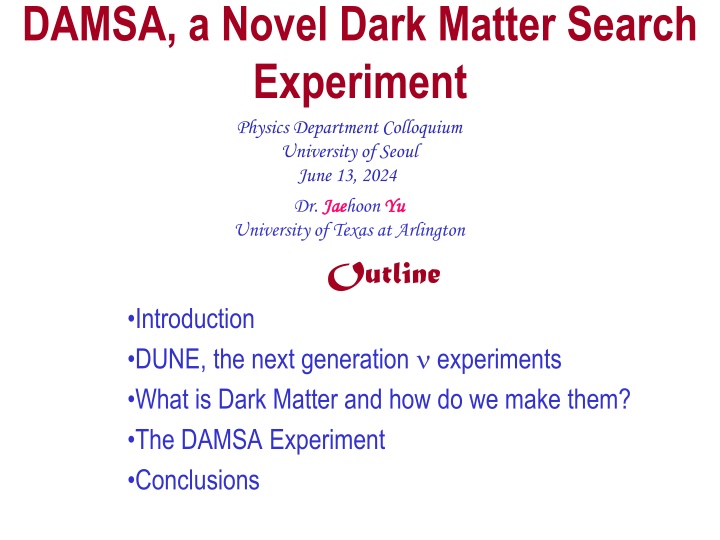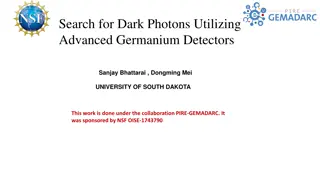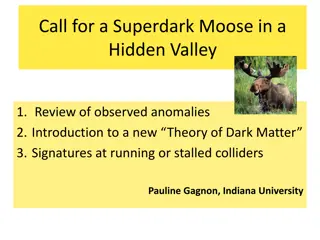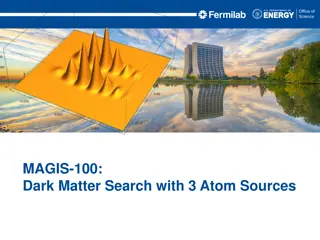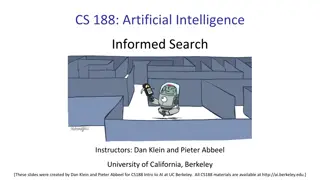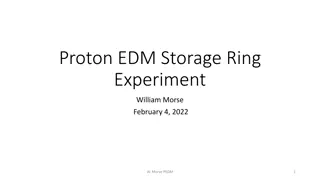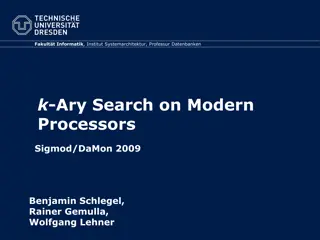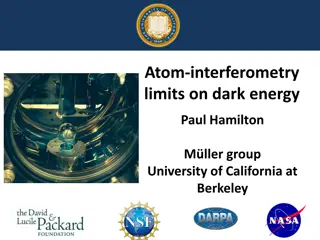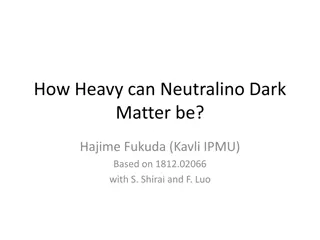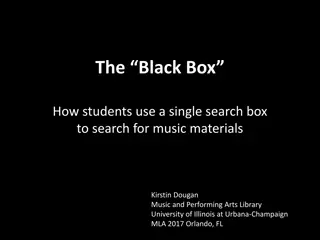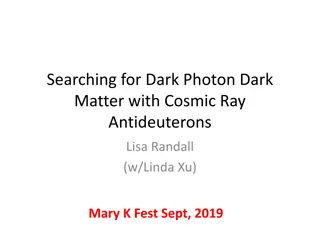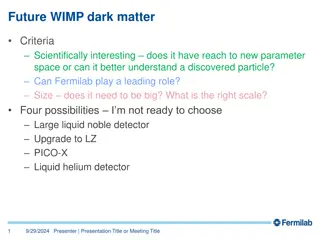DAMSA Dark Matter Search Experiment
Novel DAMSA experiment explores dark sector particles using high-intensity beams and advanced physics strategies, aiming for groundbreaking discoveries in the field of dark matter research.
Download Presentation

Please find below an Image/Link to download the presentation.
The content on the website is provided AS IS for your information and personal use only. It may not be sold, licensed, or shared on other websites without obtaining consent from the author.If you encounter any issues during the download, it is possible that the publisher has removed the file from their server.
You are allowed to download the files provided on this website for personal or commercial use, subject to the condition that they are used lawfully. All files are the property of their respective owners.
The content on the website is provided AS IS for your information and personal use only. It may not be sold, licensed, or shared on other websites without obtaining consent from the author.
E N D
Presentation Transcript
DAMSA, a Novel Dark Matter Search Experiment Physics Department Colloquium University of Seoul June 13, 2024 Dr. Jae Jaehoon Yu University of Texas at Arlington Outline Introduction DUNE, the next generation experiments What is Dark Matter and how do we make them? The DAMSA Experiment Conclusions Yu
What is DAMSA? A very short baseline dark sector particle (DSP) search and discovery experiment at high intensity p beams Stands for Dump produced Aboriginal Matter Search at an Accelerator (DAMSA) ( ) = Rumination or Reflection J. Yu et al., PRD 107, L031901 (2023) Aims to discover DSP s in the low mass regime at an accelerator Ebeam below the pion threshold beneficial Originally developed for 600MeV proton beams at a nuclear rare isotope facility The 800MeV PIP-II and the ACE beams at Fermilab fit the bill DAMSA can be at any accl. facility, including CERN May 27, 2024 DAMSA, Physics Department Colloq. Jaehoon Yu 2
DAMSA Physics Strategy Photons are sources for dark sector particle production Use case: Search for Axion-like particles (ALP) in two-photon final state via the Primakoff process Produce as many photons as possible in the dump Capture as many ALPs as possible in as wide a mass range as possible Mitigate the backgrounds from neutral particles, leveraging two EM particle final states Place the detector very close to the beam Brdar, Yu et al., PRL126, 201801 (2021) Note : ND-GAr only in DUNE Phase-II May 27, 2024 DAMSA, Physics Department Colloq. Jaehoon Yu 3
Physics Driven DAMSA Detector Discover dark sector particles beyond 2 ALP, such as Dark photon / ALP to e+e- Low mass dark matter, etc Based on the signal and neutron background mitigation studies, using GEANT4 Detector assumptions Fine granularity for a superb shower position and angular resolutions for 2 EM particle vertex pointing & DCA precision better than 1cm in the vacuum decay volume Fast timing capability at sub-ns level (~100ps) for two EM particle arrival time differences Capability of measuring up to 500 MeV photons with as fine a mass resolution as accomplishable 5/27/24 DAMSA, Physics Department Colloq. Jaehoon Yu 4
The Little DAMSA That Could! The question: Can we access the targeted parameter space with a dramatically smaller scale experiment (2401.09529)? Further studied the combinations of the following cases Reduce the detector radius to 0.1m from 1.1m, same depth (10-2) Reduce the vacuum chamber radius and length to 0.1m from 1m (10-3) Reduce the W dump length to 0.5m (case 1) & 0.25m (case 2) L=0.5/0.25m W Dump R=0.5m Vacuum L=0.1m, R=0.1m Proton Detector R=0.1m 5/27/24 DAMSA, Physics Department Colloq. Jaehoon Yu 5
The Little DAMSA Sensitivity 3mo data taking 1m-1m-0.05rad May 27, 2024 DAMSA, Physics Department Colloq. Jaehoon Yu 6
The Little DAMSA Pilot Experiment! Goal: Mount and complete a physics demonstrator in the next 2 yrs Beam: 300MeV e-beams at Fermilab FAST or ESA @ SLAC greatly reduced neutron backgrounds, compared to proton beams Target: 5cmx5cmx10cm W block (~28.5X0) Vacuum decay chamber : 10cm (r) x 30cm (L) Enable the two EM particles from the vertex in vacuum to be separated Detector: 6 x 10cmx10cm Si tracker + 44 x 12cmx12cmx1cm (24.5X0) 4D CsI total absorption ECal e Detector array Vacuum Si trk: 6x 0.1x0.1 m2 ECAL: 44 x 0.12x0.12x0.01 m3 W R=0.1m, L=0.3m Target 0.05x0.05x0.1m3 5/27/24 DAMSA, Physics Department Colloq. Jaehoon Yu 7
Conclusions DUNE is making good progress Full scale construction to begin now with cryostats followed by the detector in 2026 DAMSA is a DSP search and discovery experiment DAMSA has been making serious and steady progress Collaboration building ongoing and in its final stage half the collaborators are from Korea!! First beam measurements of background expected in June Fermilab established a task force to define the facility Whitepaper released to the archive on PIP-II Beam Dump physics opportunities (2311.09915) DAMSA presents an excellent opportunity for Korea to take the leadership in DSP search and discovery at beams May 27, 2024 DAMSA, Physics Department Colloq. Jaehoon Yu 8
